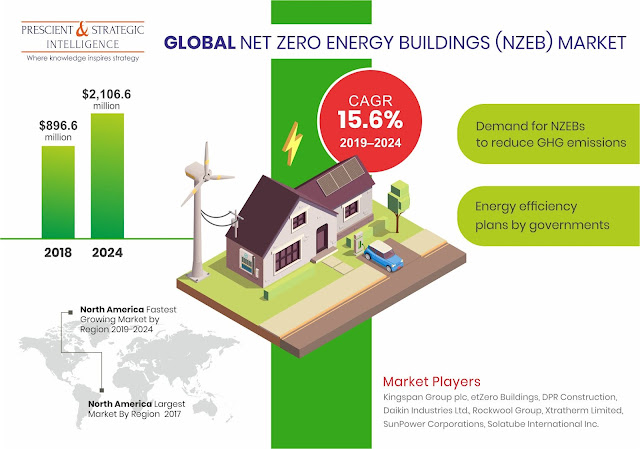
How Is High Energy Consumption Fueling Net Zero Energy Buildings Construction?
Net zero energy buildings (NZEBs) refer to highly efficient buildings having extremely low energy requirements, that is met by non-conventional energy sources. These structures produce as much energy as they consume annually. To attain their net zero energy goals, buildings must reduce their energy demands by using energy-efficient technologies and utilize non-conventional energy sources to meet the remaining demand. Owing to these properties of NZEBs, governments across the world are taking numerous initiatives to reduce the usage of fossil fuels in residential and commercial buildings.
Moreover, the surging focus on reducing greenhouse gas (GHG) emissions during electricity production is expected to drive the net zero energy buildings market at a CAGR of 15.6% during the forecast period (2019–2024). According to P&S Intelligence, the market revenue is projected to increase from $896.6 million in 2018 to $2,106.6 million by 2024. According to the World Green Building Council, the construction industry accounts for over 35% of global energy consumption and around 40% of the energy-based carbon dioxide emissions.
Globally, North America accounted for the largest share in the net zero energy buildings market in 2018 and it is projected to exhibit the fastest growth throughout the forecast period. The mounting concerns regarding GHG emission, owing to the increased burning of fossil fuels for electricity generation, will boost the construction of NZEBs, as these buildings can reduce pollution during the construction phase and ensure carbon neutrality. Moreover, the energy consumption targets set by the governments of Canada and the U.S. to attain sustainable energy demand will also support the market growth in the region.
Thus, the accelerating need to meet the high energy demand and curtail GHG emission from the construction sector will augment the construction of NZEBs in the foreseeable future.
Comments